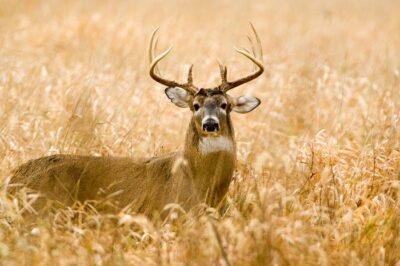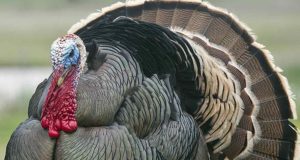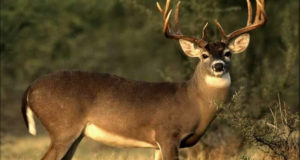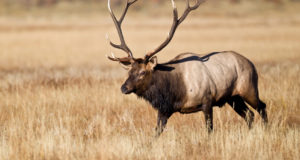With cooler weather here, it’s time to prepare for deer hunting. Along with zeroing your rifle and airing out your cool-weather gear, brushing up your understanding of deer habits will go a long way toward spotting and bringing a deer down. Do you know deer travel and eating habits? Do you know what their main focus is during specific times of the year? Do you know how smart your quarry is? Now is the time to learn so you can match your wits against one of nature’s finest creatures.
White-tail Deer Facts
White-tail deer (Odocoileus virginianus) are one of the largest native North American mammals. Mule deer are another popular deer, of which the black-tailed deer is a subspecies. While mule deer inhabit the West, white-tail deer can be found all over North America (except for the Southwest, northern Canada and Alaska). White-tail deer grow to heights of three to three and a half feet high at the shoulder and can weigh from 50 to 400 pounds. Their slender legs and powerful haunches give them great speed and jumping ability. These bursts of speed make it easy for them to quickly escape from danger. However, “They are best suited for quick getaways, for when chased over longer distances by domestic dogs, for example, they soon tire and are often killed,” says Donald and Lillian Stokes in their book, Guide to Animal Tracking and Behavior.
Where Deer Are Found
Dear tend to hang out in smaller groups, either a doe group or a buck group. Doe groups usually consist of between two and nine does. Does, yearlings and fawns group together and generally only split off for breeding with bucks and delivering their fawns. Buck groups usually contain between two to five deer and they only split up during breeding season. Sometimes groups will band together at a particularly good feeding sight, but the groups disperse once the supplies have been exhausted.
Learn The Secrets Of A Veteran Hunter As He Demonstrates How To Quickly Field-Dress Game
In every deer group there are dominant and submissive members. Dominance and submission are displayed in a number of ways, and for the most part there is no difference between sexes. Dropping ears back against the neck, staring hard at another deer and sidling (moving sideways toward another deer) are all forms of aggression. If these forms do not illicit the intended result, a deer may pick up its hoof and try to strike the other deer on the back. Flailing, rising up on the back feet and striking at each other with the front feet, is the most aggressive action a doe will take. Bucks will exhibit some of this behavior when they do not have antlers. However, when antlers are grown, they will instead use antler threat, where they lower their head toward their opponent, or antler rush, where they crash their horns with another buck. Wild animals are wise, though, and rarely move things to the point where injury to another or themselves is probable. Contact is rarely made.
Deer are most active during the early morning hours and the late evening hours. At dawn and dusk they will leave their bedding areas and quickly fill their stomachs. Once full, they will return to favorite bedding areas to chew their cud. Deer will use the same paths again and again as long as ample food and safety are available. In the winter time, this can become especially evident as several groups of deer may gather to share warmth in areas with dense evergreens that provide wind protection, less snow build-up and green browse for food. Their nighttime preferred cover areas are heavy brush or dense evergreens. These offer seclusion and protection. During the day, deer like to find higher ridges where they can see and smell danger a long way off. During the winter, southward-facing slopes are preferred as they tend to be a little warmer. White-tail deer, if unbothered, prefer to maintain their home range within a two to three square mile area. Leaving for unfamiliar territory can put them in danger. Does stay in their ranges all year long unless forced out, while bucks may travel more during the mating season.
Eating Habits
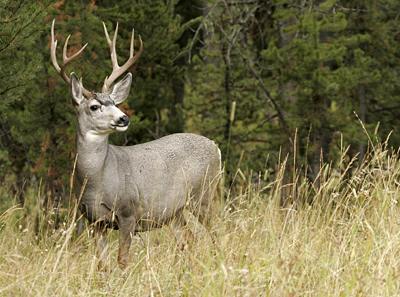
Image source: FishTheWest.com
Deer are browsers, meaning they will eat a good variety of different types of greenery and woody plants. This gives them the ability to adapt almost anywhere and helps them survive through the harsher winter months. They eat mostly at dusk and dawn and retire to secluded areas to chew their cud during the daylight hours. In summer, deer will eat leaves, grasses, wildflowers, shrubs, vines, trees, wild roses, catbriers, sweet fern and corn. In fall, deer enjoy the fruits and nuts that abound, and some of their favorites are apples, persimmons and acorns. In the winter, deer survive by eating twigs from maple, oak, sumac, dogwood, aspen and willow trees. They also enjoy the greenery from evergreens like yew, white cedar, hemlock, pine, arborvitae and fir. Springtime will find them supplementing their winter feed with the first greens that appear.
The Yearly Deer Cycle
Bucks and does remain separate for most of the year. In April and May bucks will start to grow their antlers. Contrary to popular belief, antler size is not related to age, but rather to food availability and richness. By August and September the antlers are fully grown and the bucks begin rubbing off the velvety growth that nourished the growing antlers. These early rubs, in September, serve to remove the velvet, while later rubs in October seem to be a way of marking territory and leaving scent. When the antlers are grown and necks are enlarged, buck groups split up to find does. Multiple bucks may pursue one doe, but the strongest, most dominant one will be closest to her. In October, the does come into estrus and are receptive to a buck for only 24 hours. They will often split away from their doe groups during this time to mate. If the doe is not mated successfully, she will come into estrus 28 days later. Mating can occur anywhere from October through January, but most in the North happens in November. About 200 days later, in June, does will break off from their doe group to kid and will remain away for a couple of months. During the first month, the new fawn(s) is relatively still. But after that it begins following its mother around and a short time later, in August and September, they will rejoin the doe group, and the cycle starts over again.
Weather Tips
Weather may be one of the biggest factors in successful deer hunting. While minor rains and breezes don’t seem to faze deer, harsher rains or snowstorms and stronger winds will cause deer to bed down and if they are up, they will be considerably more skittish. Stormy days can make for very difficult hunting. During hunting season, watch the weather, and if a heavy storm is coming, try to plan to hunt up to 48 hours prior. Deer can sense approaching storms and will increase their feeding activity ahead of a storm. They also may travel down from higher places to lower bedding areas when snow storms are approaching. If you know the corridors they migrate through, setting yourself up to spot deer coming through before the storm can put you in good stead for some of the best hunting you’ll see. If you have to be out hunting when the weather is poor and the deer have most likely bedded down, walk along ridges and through brushier areas to scare them up. Another great time to spot deer is after a bad storm. They will be eager to feed, so watch along forest edges or find a spot to sit just off of major deer trails. The deer may be out as late as noon after a particularly bad storm. Generally, the most deer movement will be between 7:30 a.m. in the morning and about noon. Things will get pretty quiet for a couple hours and then pick back up around 4 p.m. until dusk.
On days when there is a steady drizzle going, it can be tempting to skip hunting, but the deer will be out and you will have the added benefit of almost noiseless walking since the sodden earth will muffle your footsteps. In short, try to think like a prey animal. Food and safety are two prime deer motivators.
Every year, hunters exchange stories about “the one that got away.” Make this year your turn to share a story about “the one that ALMOST got away.” Happy hunting!
What are your deer hunting tips? Share them in the section below:
 Off The Grid News Better Ideas For Off The Grid Living
Off The Grid News Better Ideas For Off The Grid Living

